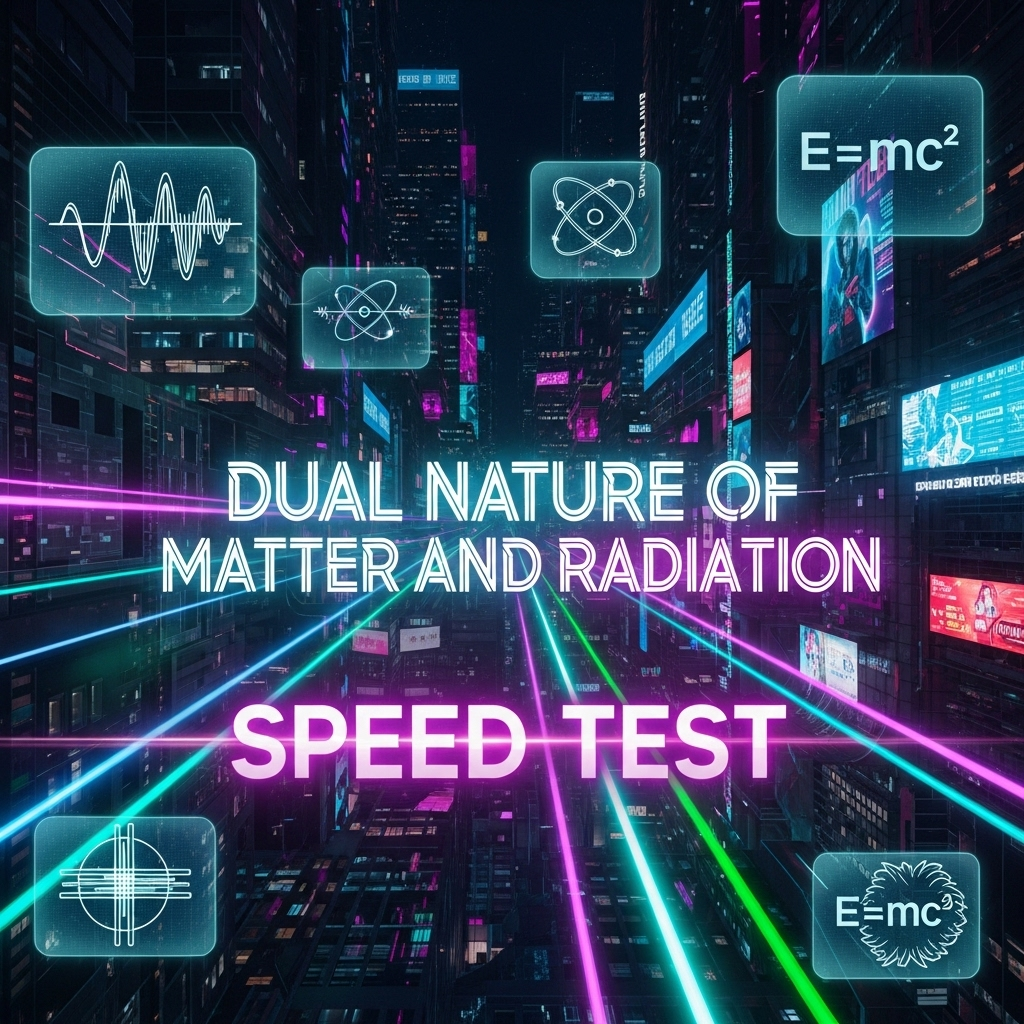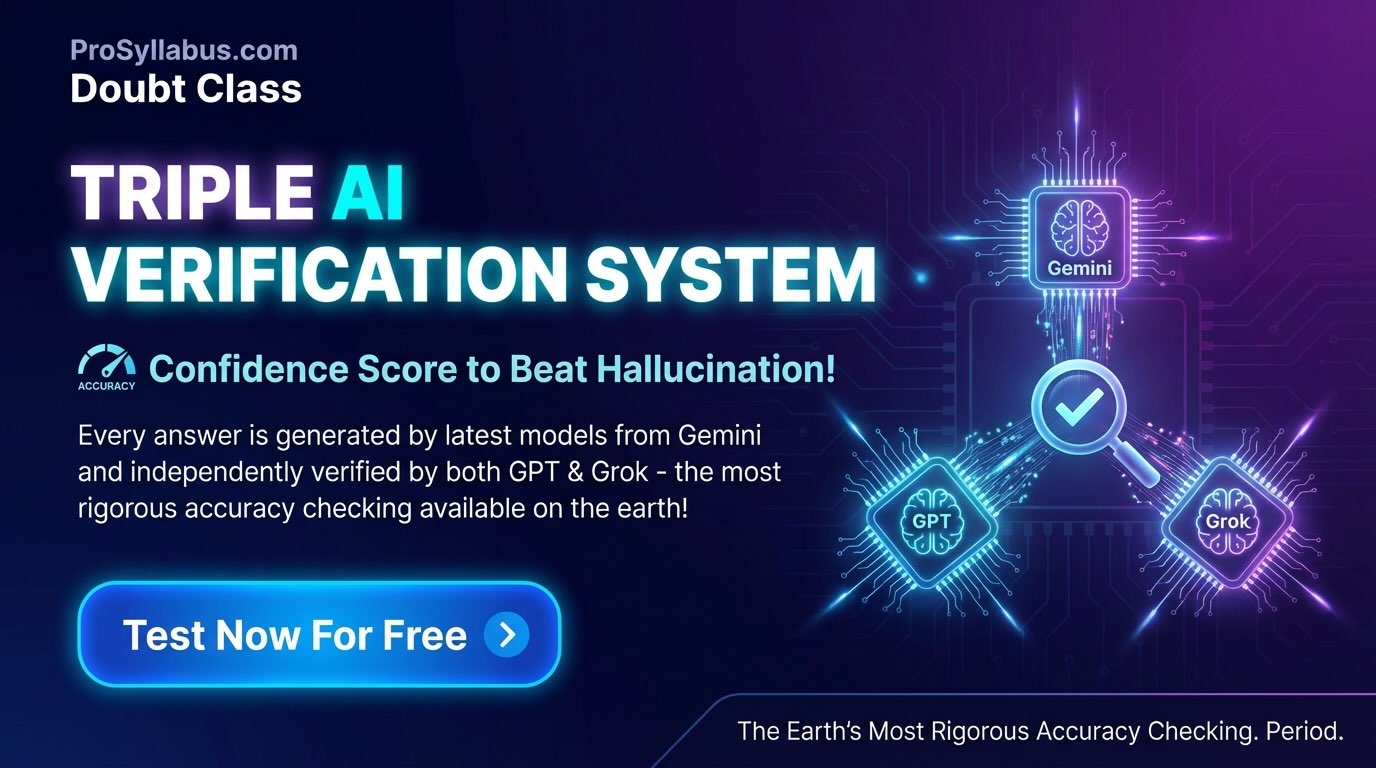Dual Nature of Matter and Radiation Mastery – Interactive Quiz & Cheatsheet
Boost your understanding of the Dual Nature of Matter and Radiation with this engaging quiz and quick-reference guide tailored for exam success
Updated: 3 months ago
Categories: Mini Game, Physics, Class 12, Quantum Physics

Dual Nature of Matter and Radiation Cheatsheet
Cheat Codes & Shortcuts
- Photoelectric Effect: \( E = h \nu \), where \( E \) is photon energy, \( h \) Planck’s constant, \( \nu \) frequency.
- Work Function: \( \phi = h \nu_0 \), minimum energy to eject an electron.
- Einstein’s Photoelectric Equation: \( h \nu = \phi + \frac{1}{2} m v_{\text{max}}^2 \).
- de Broglie Wavelength: \( \lambda = \frac{h}{p} = \frac{h}{m v} \), where \( p \) is momentum.
- Photon Momentum: \( p = \frac{h}{\lambda} = \frac{E}{c} \).
- Wave-Particle Duality: Matter exhibits both particle and wave-like properties.
- Uncertainty Principle: \( \Delta x \cdot \Delta p \geq \frac{h}{4 \pi} \).
- Planck’s Constant: \( h = 6.626 \times 10^{-34} \, \text{J·s} \).
- Stopping Potential: \( e V_s = \frac{1}{2} m v_{\text{max}}^2 \).
- Davisson-Germer Experiment: Confirms electron wave nature via diffraction.
Quick Reference Table
| Type | Concept | Formula/Description |
|---|---|---|
| Photoelectric | Photon Energy | \( E = h \nu \) |
| Work Function | Threshold Energy | \( \phi = h \nu_0 \) |
| Photoelectric Eq | Energy Conservation | \( h \nu = \phi + \frac{1}{2} m v_{\text{max}}^2 \) |
| de Broglie | Matter Wave | \( \lambda = \frac{h}{p} \) |
| Uncertainty | Heisenberg Principle | \( \Delta x \cdot \Delta p \geq \frac{h}{4 \pi} \) |
| Photon Momentum | Light Momentum | \( p = \frac{h}{\lambda} \) |
Advice
Identify Context: Determine if the problem involves photons or matter waves.
Use Formulas: Apply Einstein’s photoelectric equation for light, de Broglie for matter.
Units: Ensure consistency in units, especially for energy (eV or J) and wavelength (m or nm).
Threshold Frequency: Always check for \( \nu_0 \) in photoelectric problems.
Verify: Cross-check calculations with physical principles like energy conservation.
Dual Nature Quick Tips
- Photoelectric Effect: Use \( h \nu = \phi + \frac{1}{2} m v_{\text{max}}^2 \) for electron emission problems.
- de Broglie Wavelength: Apply \( \lambda = \frac{h}{p} \) for particles like electrons or protons.
- Photon Energy: Calculate energy using \( E = h \nu \) or \( E = \frac{h c}{\lambda} \).
- Uncertainty Principle: Use \( \Delta x \cdot \Delta p \geq \frac{h}{4 \pi} \) for position-momentum problems.
- Stopping Potential: Relate to kinetic energy via \( e V_s = \frac{1}{2} m v_{\text{max}}^2 \).
Dual Nature of Matter and Radiation Speed Quiz
Test your speed with 5 dual nature questions! You have 30 seconds per question.
Question: 1/5
Time left: 30s
Quiz Complete!
Your Score: 0/5

Group Discussions
No forum posts available.


